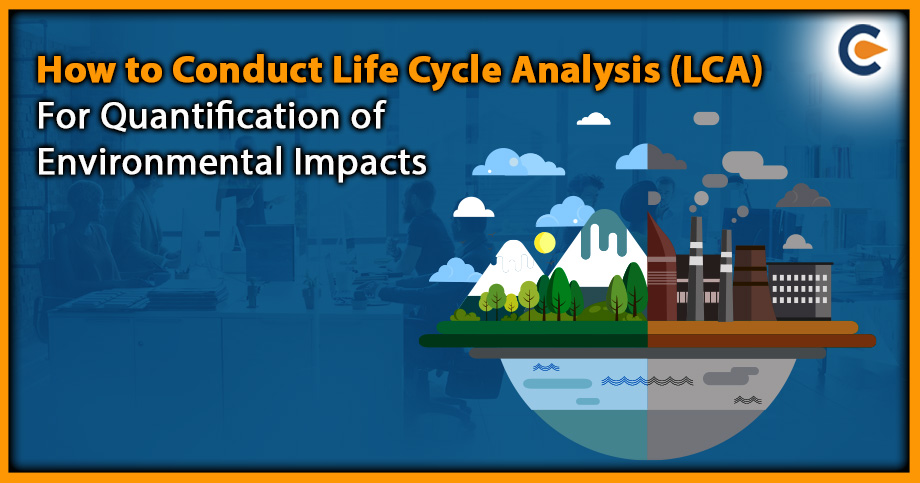Life cycle assessment[1] (LCA) is a method used to evaluate the environmental impact of a product throughout its entire lifespan. The primary purposes of this technique are to analyse the various stages of a product’s life cycle in terms of its environmental impact and to prioritise improvements in products or processes based on this information. Additionally, LCA can be used to compare different products for internal use. The use of LCA methodology can help in several ways, including identifying life cycles that have a minimal negative impact on the environment and guiding decision-making in industries, public organisations, and NGOs regarding strategic planning, product design, or changes to processes. LCA can also help organisations choose important indicators of environmental behaviour and assess the state of their environment. Additionally, LCA can be used to support marketing efforts by creating environmental declarations or eco-labelling.
Considerations in LCA
When conducting a life cycle assessment study, it is important to consider the environmental impacts of human activities. This can be achieved by examining the resources and energy consumed at each stage of a product’s life cycle and the pollutants and waste emitted. These inputs and outputs must be evaluated for their effects on the long-term sustainability of renewable and non-renewable resources, human health, and biodiversity. Once these impacts are understood, steps can be taken to mitigate the negative effects on the environment.
Methodology of Life Cycle Analysis (LCA)
LCA methodology can be divided into three levels based on the level of technical detail used:
- Conceptual LCA: This is the first level of LCA, focusing on a limited number of environmental aspects of a few life cycle stages, where there is still room for improvement. The results are useful for qualitative reporting but not suitable for corporate marketing or explicit publication of LCA study.
- Simplified LCA: This is a comprehensive assessment that uses generic datasets to cover the entire life cycle of a product or system of processes. It significantly reduces time and cost compared to detailed LCA. Simplified LCA involves screening of life cycle stages, simplifying the LCA results for future recommendations, and ensuring the reliability of the analysis results. It is also known as “Streamlined LCA.”
- Detailed LCA: This is a comprehensive type of LCA that considers each life cycle stage with system-specific datasets and analyses it in detail to identify opportunities for process improvement.
Research and Development of Life Cycle Analysis (LCA)
A Life Cycle Assessment can benefit product management for two reasons. Firstly, it can help companies comply with regulations that require disclosure of environmental data for their products, such as standardised tenders for public projects. For instance, a company that supplies asphalt for a public road-building project may need to conduct a Life Cycle Assessment to provide the environmental footprint of their product to participate in the tender.
Secondly, LCA can aid in developing new environmentally friendly products, which may be driven by corporate policy, customer demand, or regulations. In this case, an LCA can compare the environmental impact of different materials used to produce the end product.


Source: www.researchgate.com
Process of Life Cycle Analysis (LCA)
The process of conducting a Life Cycle Analysis (LCA) involves the following steps:
- Goal and Scope: This involves defining the purpose and boundaries of the LCA study. The goal should be clearly defined, and the scope should include the product or service being studied, the system boundaries, and the functional unit (e.g., one kilogram of product).
- Life Cycle Inventory (LCI): This involves collecting data on the inputs (e.g., raw materials, energy) and outputs (e.g., emissions, waste) associated with each stage of the product’s life cycle, including the production of raw materials, manufacturing, distribution, use, and disposal.
- Life Cycle Impact Assessment (LCIA): This involves assessing the environmental impacts associated with the inputs and outputs identified in the LCI stage. This is typically done using LCIA methods that translate the inventory data into environmental impact categories, such as climate change, human toxicity, and biodiversity loss.
- Interpretation: This involves analysing and interpreting the results of the LCA study, including identifying hotspots (i.e., stages of the life cycle with the highest environmental impact), evaluating alternatives, and making recommendations for improvement.
It’s important to note that LCA requires significant expertise and data resources, so it may be necessary to work with a consultant or use software tools to assist with the process. Additionally, LCA should be considered a dynamic tool that can be updated as new data becomes available or changes in the product or service occur.
Conclusion
Life Cycle Analysis (LCA) helps individuals and organisations identify opportunities to reduce their environmental impact by identifying areas where improvements can be made in the design, manufacturing, use, and disposal phases of a product or service. It can also help inform decision-making and policy development by providing objective data on the environmental impact of different products and services. However, it’s essential to recognise that LCA has some limitations and challenges. The data collection and analysis required for an LCA can be time-consuming and costly. Additionally, there are uncertainties and assumptions inherent in LCA, and the results can be influenced by factors such as the choice of system boundaries and allocation methods. Despite these limitations, LCA remains a valuable tool for assessing the environmental impact of products and services, and it can help promote more sustainable practices and decision-making.
Read Our Article: New Amendment Under Section 49 Of The Legal Metrology Act, 2009











